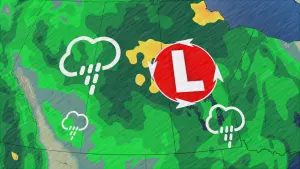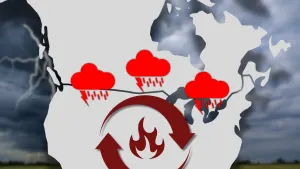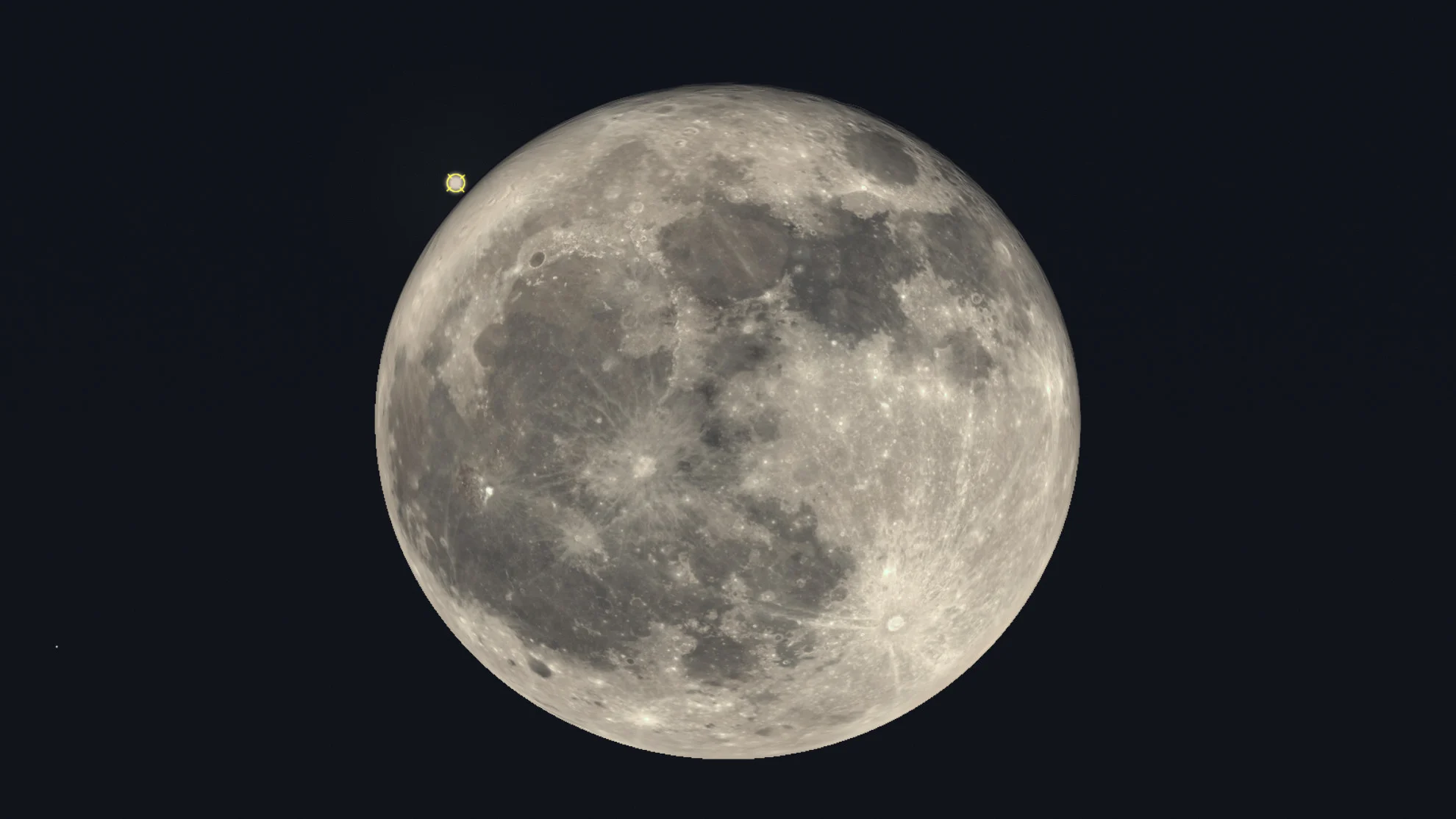
Look up this week to see May's Full Flower Moon
The Flower Moon rises Wednesday night, but look closely just past moonrise the night after to see it slip by one of the brightest stars in our sky.
Eyes to the sky this week to see May's Full Flower Moon, and keep a sharp eye out for a couple of added bonuses — fragments of Halley's Comet and the near-occultation of the bright star, Antares.
At 9:56 a.m. EDT on Thursday, May 23, the Moon will be lined up on the exact opposite side of Earth from the Sun, marking the moment of the May Full Moon.
However, according to NASA, the Moon will appear full from Tuesday night until early Friday evening. This is due to it being far enough away that, to the unaided eye, it's challenging to notice the slim 2 to 3 per cent of the Moon's edge being in shadow both just before and just after it is completely full.
What is a Flower Moon?
The May Full Moon often goes by the popular name Flower Moon. This is one of twelve names written down by the Farmer's Almanac nearly a century ago, one for each of the typical Full Moons of the year.
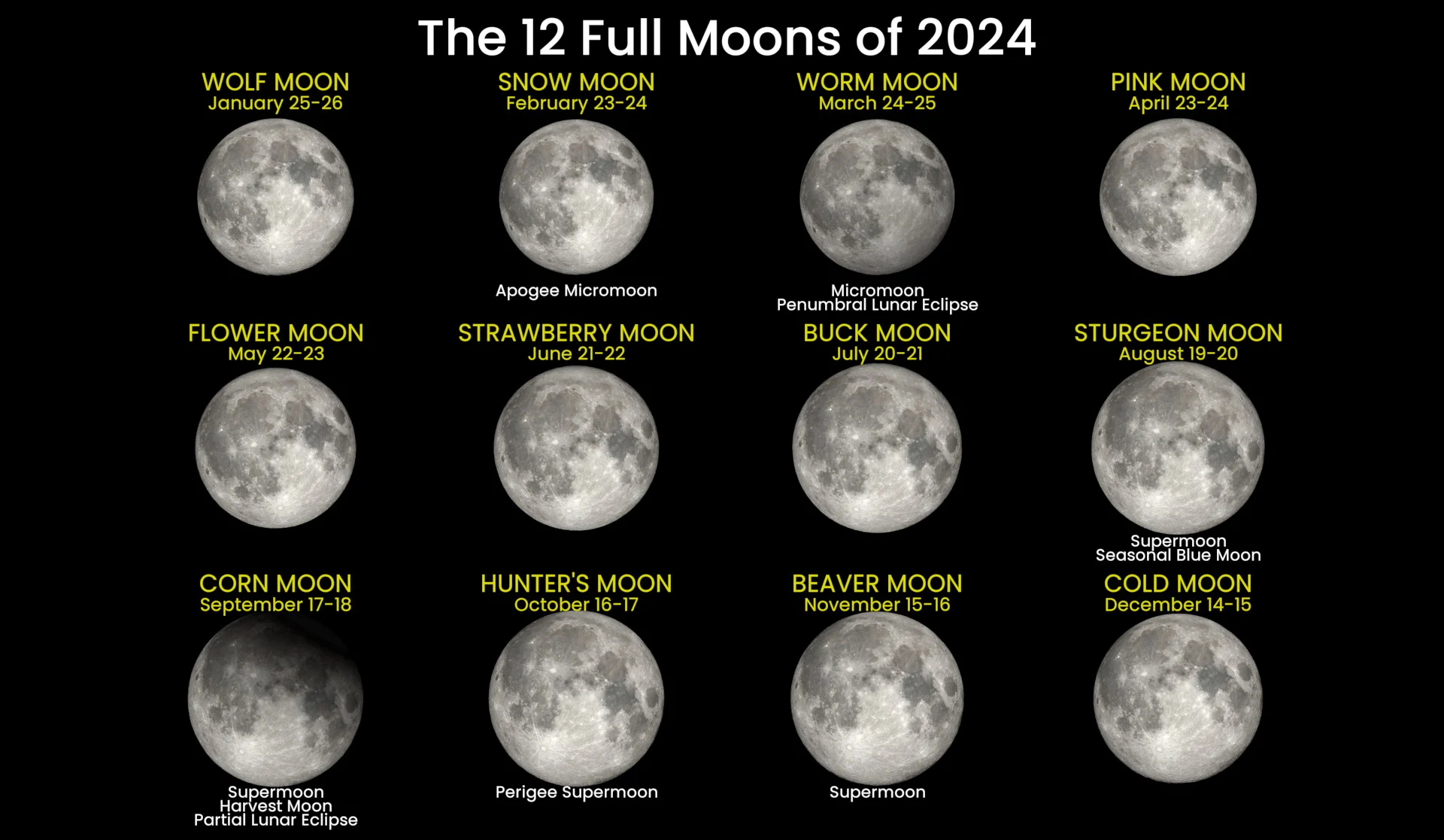
This graphic collects all the relevant data about each Full Moon of 2024, including their popular names, whether they are a 'super' or 'micro' Moon, a perigee or apogee Full Moon, and whether they are remarkable in some other way, such as a Blue Moon, Harvest Moon or a lunar eclipse. (NASA's Scientific Visualization Studio/Fred Espenak/Scott Sutherland)
The names they chose were mostly inspired by the lunar calendars of First Nations peoples living in the US Northeast, but also include some Colonial and European folklore.
"The Full Moon in May is known as the Flower Moon. Other names include the Planting Moon, and the Milk Moon, while some named it the Hare Moon," says TimeandDate.com
While it's common to see the face of the "man in the moon", or perhaps Wilma Flintstone, the Moon's dark lunar mare can also appear to form a rabbit if you look at them just right.
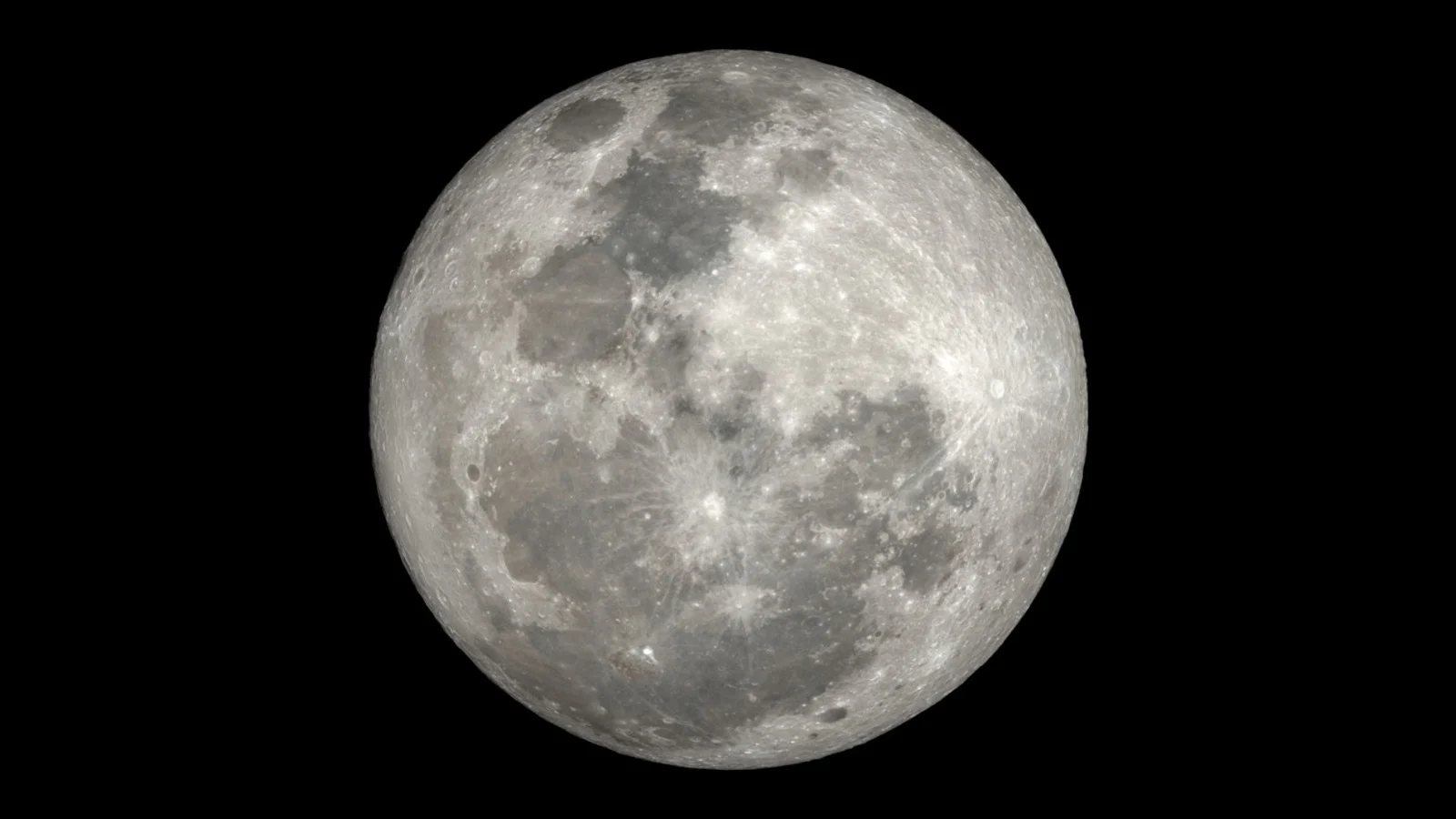
A slight shift in point-of-view reveals a rabbit on the Moon. (NASA's Scientific Visualization Studio)
DON'T MISS: Comet fragment lights up sky over Spain and Portugal 'like a movie'
Meteors from Halley's Comet
The nights around a Full Moon aren't exactly the best time to look for meteors. However, even though the eta Aquariid meteor shower peaked a couple of weeks ago, it is still possible to see a few fragments from Halley's Comet streak across the sky this week.
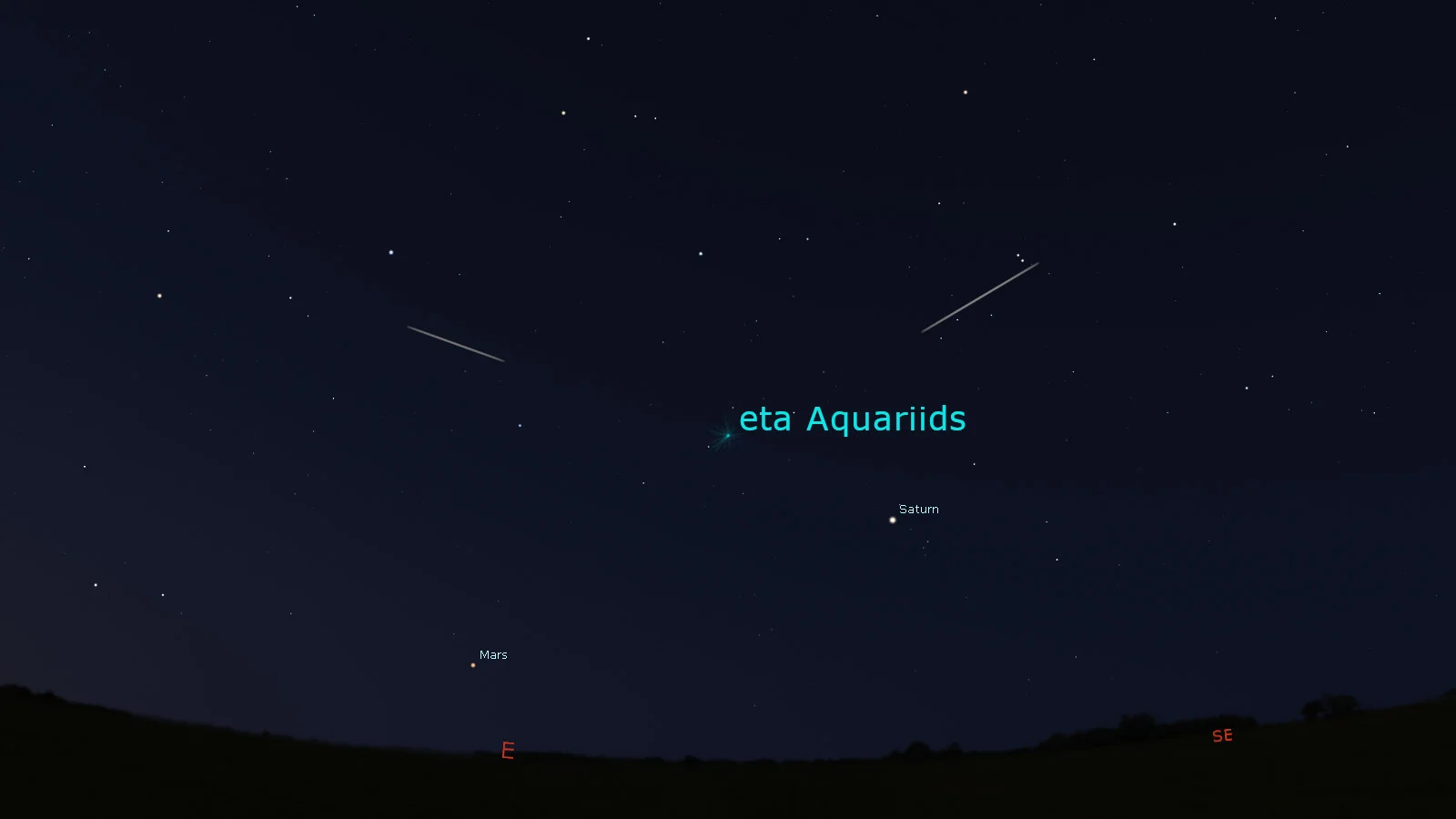
Mars and Saturn 'hang out' with the radiant of the eta Aquariids meteor shower in the eastern sky at roughly 4:30 am EDT on May 22, 2024. (Stellarium/Scott Sutherland)
Whereas during the peak we could expect maybe 10-20 meteors per hour, this late in the meteor shower, there will likely only be a handful of meteors each night.
READ MORE: Once-in-a-lifetime northern lights dance across North American skies
Encounter with Antares
On the evening of May 23, in the hour or so just after the Moon rises, it will be very close to another bright object in the sky — Antares.
Antares is a massive red 'supergiant' star located in the constellation Scorpius, around 550 light years away from Earth. At around 700 times the diameter of our Sun, if Antares was dropped into the centre of our solar system, its outer surface would be somewhere in the asteroid belt, around 3 times the distance of Earth's orbit.
Antares shines as one of the top 20 brightest stars in our night sky, and on May 23, parts of North America and Europe will be able to see it duck behind the Moon. This event is known as a lunar occultation.

Antares in a near-occultation with the Moon, as viewed in a simulated view of the night sky from southwestern Ontario on May 23, 2024. (Stellarium/Scott Sutherland)
Here in Canada, we won't be able to see this. Windsor, ON, comes the closest, with the star right on the limb of the Moon at nearest approach.
However, we will be able to see the Moon and Antares exceptionally close together on that night.
Editor's note: This article previously stated that the Full Flower Moon occurred at 9:56 a.m. EDT on Wednesday, May 23. The actual date of the event was Thursday, May 23. This has been corrected. We apologize for any confusion.







